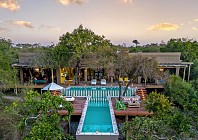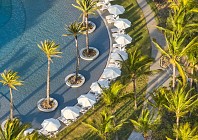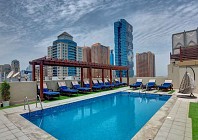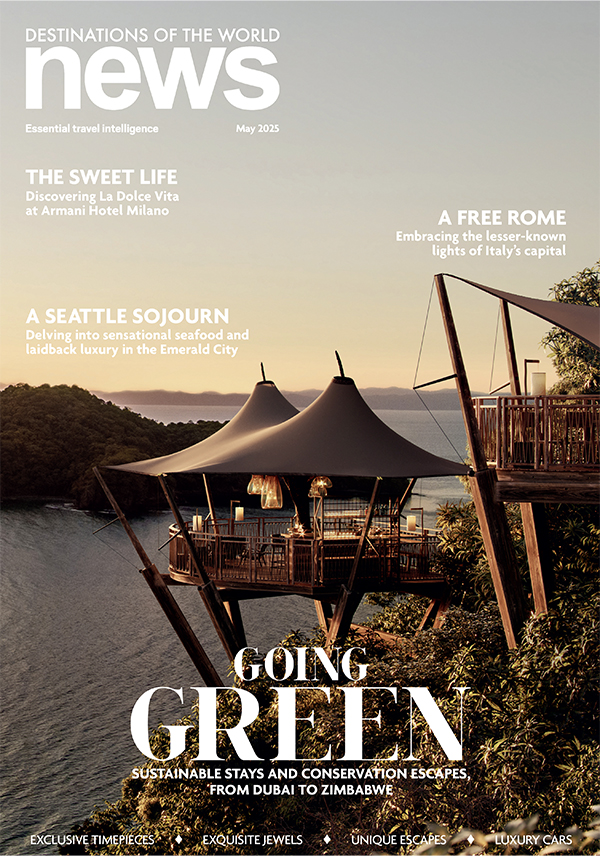When it comes to travel we all have our own ideas about luxury, usually depending on point of view and pocket. For many it is serious comfort – first-class travel and five-star hotels. For others it is pure pampering; 500 thread-count sheets, a choice of six different coffees, pillows, bathing rituals, wall-to-wall butlers and a full-scale spa. Then again, more and more of us yearn for peace, privacy and free WiFi.
However, there is an even more elusive side to luxury that so many of us spoilt and jaded travellers are looking for, and that is simply the luxury of an unforgettable experience. When was the last time on your holidays or travels that you were genuinely and truly surprised? When the sheer strangeness, foreignness or extreme beauty of a place or a people left you breathless, let alone speechless?
Perhaps waking up in the foothills of the Himalayas or on a balloon-ride, at sunset, over Pagan – it could even be the simplicity of Norman Foster’s bridge in the clouds in France’s Tarn valley, or a spellbinding drive along Italy’s Amalfi Coast.
Since we have all become so well travelled, the luxury of experience has got lost among the Frette linens and in-room iPads, but every so often we are reminded of just how potent such an experience can be. It happened to me earlier this year in Ethiopia, a country I had long planned to visit, but kept postponing. A country which is only known to most of us for famines and wars, but which is also home to the source of the Blue Nile, the Ark of the Covenant, the painted churches of Lalibela and the ‘Bleeding Heart’ Gelada baboon, and all of that in just one part of the northern corner of the country.
What nobody tells you though, is just how extraordinarily beautiful the place is – a country of vast lush plateaux, deep ravines and rift valleys, mountain landscapes that disappear into infinity, gentle lakes and surprisingly vibrant cities. In between, you meet some of the most elegant people on earth and wonder how, of all African countries, this is the one that has never been colonised – despite several failed attempts by the Italians. They did bequeath the makings of a great espresso, but the best coffee in the world was already there to begin with.
Start and end in Addis Ababa, a vibrant, noisy city with the largest open-air market in Africa, the Mercato. You can buy and sell everything here – there is even a lane called “tell me what you want street” and another where recycling is raised almost to an art form when you see what people will make out of other people’s trash.
Must-sees are the national museum, which includes the remains of Lucy, a three-and-ahalf million year old hominid, the Ethnological Museum and the Kiddist Selassie (Holy Trinity) Cathedral. Most startling of all is the grave of women’s rights activist Sylvia Pankhurst, right outside the cathedral. She rests a long way from home, but she fell in love with the country when she set up an anti-fascist league to stop one of Mussolini’s forays into the place.
But it is when you head north from Addis that you gradually become subsumed into the spirit and wonder of the place. Stop off at Bahir Dar and Lake Tana, where boats will take you to visit churches and monasteries on the islands that dot the lake (although some do not allow women to visit), and across to the Blue Nile Falls and the source of the great river which begins its journey to the Mediterranean.
Stay in a new hotel at the lakeside, the Kuriftu Resort and Spa, which seems to grow out of the landscape and where a daily massage is included in your room rate.
Axum is the spiritual heart of Ethiopia, but it was also once its capital and commercial centre. From 200 BC until 700 AD, this was the seat of an empire which reached across the Red Sea to Arabia, traded with India and China, had its own alphabet and was regarded as one of the four great powers of the ancient world.
Today it attracts visitors and pilgrims from all over the world as its Mariam Tsion Church is reported to house the Ark of the Covenant. No one but its guardian is allowed into the holiest of holies, however he will occasionally greet visitors through the gates, pray with them and bless them, for neither is he allowed to leave the church grounds.
Axum is also renowned for its extraordinary stelae or obelisks – some are more than 3,000 years old and the largest, which weighs 520 tons, could never be erected because of its weight. There are over 3,000 monolithic stelae in and around Axum, any of which would knock Cleopatra’s Needle into a cocked hat.
All around the stelae field excavations are taking place of tombs and palaces, libraries and meeting halls and yet there are is still some 70 percent of it to be investigated and excavated. And some things often don’t need excavating. Just 20 years ago, three farmers came across a stone in one of their fields.
On investigation, it turned out to be the Ezana Stone, a memorial stone inscribed in three languages – Greek, Sabean and Geez. Over 1,600 years old, it is in near perfect condition and is known as the Ethiopian Rosetta Stone. Other than counting stelae and visiting even more wonderful churches, Axum is where the Queen of Sheba had her palaces and her baths (taken in what was actually a reservoir) and a small, but perfectly displayed museum.
But Lalibela is the jewel in the crown of this extraordinary country, with its complex of 11 churches cut out of the hard red granite earth. Legend says it’s the work of angels, but the churches were commissioned by the 12th century King Lalibela and literally chipped out of the rocks by man.
All the roofs are at ground level, so to visit them you climb down through narrow walkways and steep steps to places where pilgrims come in their thousands throughout the year, walking for weeks, carrying a small bundle of supplies and swathed in the white cotton shawl known as a shama.
The shawl lends an elegance to the wearer and even an aura of spirituality as the pilgrims wind through mountain passes, across fields and down into the carved churches.
The most spectacular of the churches is that of St. George, which is carved in a cruciform shape and whose roof signifies three different crosses – Maltese, Christian and Greek, while the finest church is Bet Emanuel, which once was the private church of the royal family.
Lalibela itself is a lively little town with restaurants, shops, internet cafés and a weekly market, which obviously hasn’t changed in the last millennia – a place where you can buy a goat, some potatoes, herbs and clothes.
If you have time, try to visit the monastery of Yemrehanna Kristos, a magnificent cave church that looks as if it has been carved from a chocolate cream cake. In layers of marble and olive wood, it is one of the finest examples of Axumite architecture you will find, and it’s just 40 kilometres outside of town. You can also take a day or an overnight trip to the Simien Mountains from Lalibela, and it is here you can find the Bleeding Heart (Gelada) baboons in some profusion.
Otherwise head back to the airport and make for Gondar, another former capital, founded by the Emperor Fasilidas in 1636. And while, again, there are monasteries and churches (44 in total), it is the Royal Enclosure that is the revelation. Within its walls, accessed by twelve gates, there are six palaces, all sporting four towers, which resemble the ancient Portuguese pepper pot versions.
Each castle is set in its own grounds, some with attached lion houses, others with amazing hammams, but all exuding an extraordinary feeling of peace and tranquillity – albeit located in the midst of a huge and growing city.
It is difficult to think of another country where you can experience so much beauty, so much wonder and such historical wealth in a short time. Ethiopia is fast becoming a destination of choice for the satiated traveller – go now before it is overtaken by too many five-star hotels and too much western luxury.
Experience the slightly eccentric electricity supply and the occasional lapse in the hot water stakes. Swimming pools are still a novelty, although spas are making inroads, western restaurants are gradually encroaching (Italian, obviously) but in most places you will still be served the local grain, teff, which is made into an injera. This is the national dish, a grain, unique to Ethiopia, made into a soft flat bread, on which smaller spicy meat and vegetable dishes are served. It won’t win any prizes for looks, but it supplies more fibre-rich bran than any other grain as well as more protein, calcium, iron and complex carbohydrates.
The beer is good, the wine not so, the coffee is sensational – what else does one need for a truly luxurious holiday?
Before you go
Getting to Ethiopia and travelling within it is relatively easy if you take to the air, however some road journeys, while long, tedious and a tad uncomfortable, are not without some compensation in what you see and experience along the way. Try to avoid the rainy season from April to September.
If time is limited, Ethiopian Airways has regular flights between the must-see sights. Airports are a little chaotic but prepare yourself by allowing plenty of time and practicing some deep breathing exercises to induce a sense of calm. You may also wish to remind yourself that Ethiopia is not as other countries – they have their own calendar (it has 13 months), their own year, (it is now 2003) and their own time (midnight is their 6am). Once your mindset has adapted, everything else is a complete joy.










